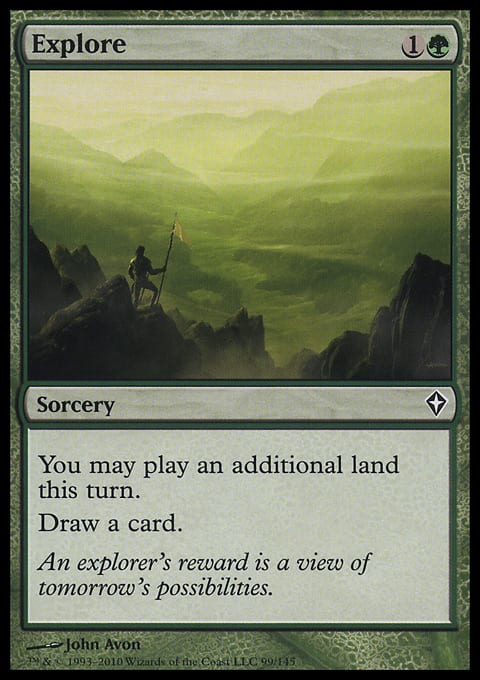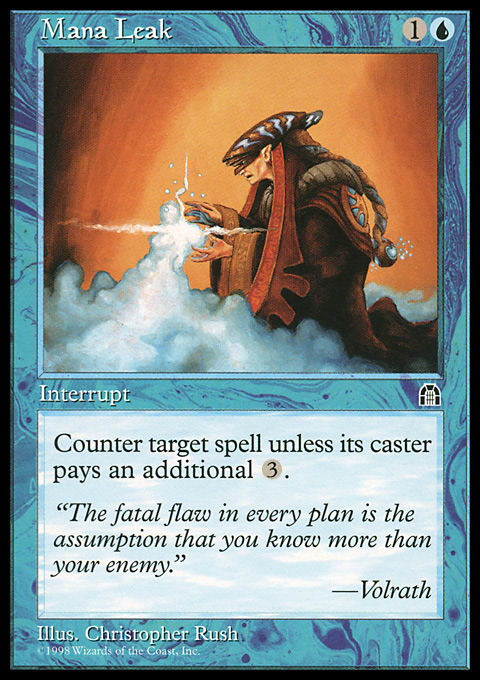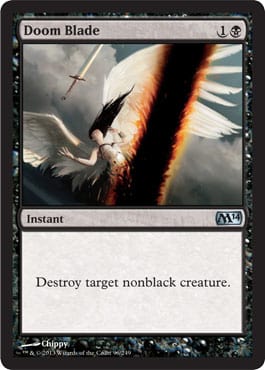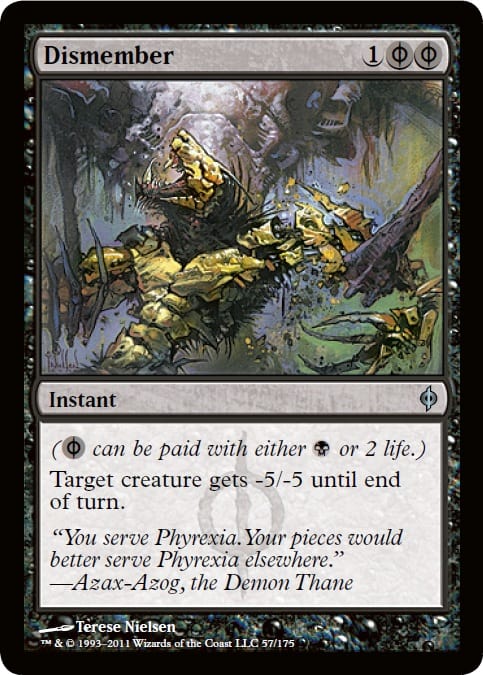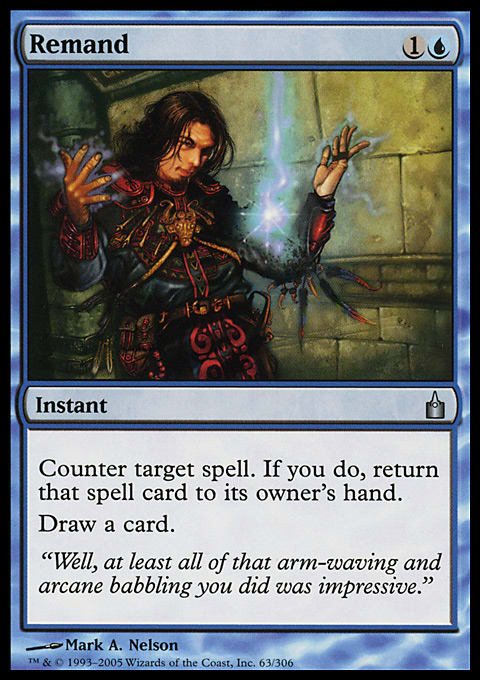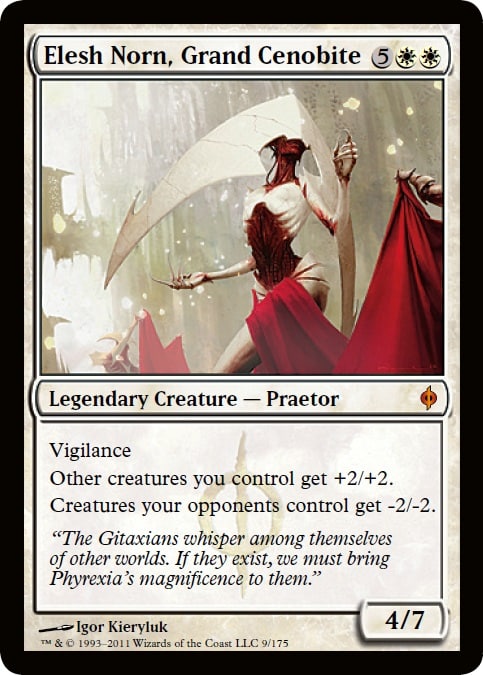The basic principle of controlling game flow is controlling the timing of spells. If both players are casting spells on a timetable that is favorable to you, you are controlling game flow. If both players are casting spells on a timetable that is favorable to your opponent, your opponent is controlling game flow. Thus, understanding how time affects a game of Magic is crucial to understanding the flow of the game—and thus how to control it.
Needless to say, you have different objectives depending on whether you are trying to deny time or gain time within any individual matchup. Even so, some general principles apply. Let’s talk about them.
The central effect of time on a game of Magic can be represented by one card:
What does Explore represent? Your ability to cast spells. Consider that there are two main restrictions on whether you can cast a spell: the physical card (which must be in your hand) and mana. Explore alleviates both of those issues. It provides you an extra land and helps to ensure you have spells to cast.
Now, let me ask you: Would you like it if Explore was free?
It often is.
Here’s a short rundown of some of the best Standard-legal spells that often have free Explores attached:
Consider what happens when your opponent plays a creature onto an empty board and you Doom Blade it at end of turn. You get to go to your next turn, untap, draw a card, play a land, and pass back with all your mana untapped. In effect, what you have just achieved is not only killing his creature, but also getting a free Explore out of the deal (you are in a similar position, but you have drawn a card and played another land). Understanding this free “Explore” is crucial to understanding how time impacts matchups in Magic.
As a more concrete example, in last week’s article, LSV was facing down a Stromkirk Noble and a Spikeshot Elder while at 20 life and holding Timely Reinforcements. I said in my article last week that playing Day of Judgment in that spot was a huge mistake. Why? LSV missed two Explores (sadly, these are normal Explores, not “special” Explores).
If LSV does nothing, his opponent will attack him next turn, and LSV will fall to 17. This allows him to play Timely Reinforcements and go back up to 23 while making three dudes. The fastest way for his opponent to clear out all three dudes is to shoot one at end of turn with Spikeshot, then play Arc Trail on the remaining two. He will then attack LSV for 4, dropping LSV to 19. LSV will untap for his next turn and by his main phase will be in a similar situation (20 life versus 19, facing down the same board with Day of Judgment in hand), but he will be up two cards and two land drops. It’s also worth noting that this is the worst possible outcome of casting Timely Reinforcements for LSV.
Two Explores!
This sort of play has a huge, cascading impact on the game—you can then play your critical spell (Day of Judgment) from a much stronger position (6 mana instead of 4, potentially with Mana Leak backup), all because you cast Explore twice in the form of a ![]()
![]() sorcery, thus buying yourself a huge amount of time.
sorcery, thus buying yourself a huge amount of time.
It all comes back to time. In the vast majority of situations, you will be in one of two situations: You will either prefer a shorter game or a longer game. This is because of the fact that, most of the time, one deck is going to be advantaged in a longer game over the other—sometimes significantly so. Explore plays into this situation by accelerating the directional flow of the game toward the end. Each time a player makes a land drop, he is moving closer and closer to the long game. Sometimes, this is a bad thing; sometimes, this is a good thing.
Explore is a good way to view this long-game-versus-short-game dynamic. The more turns that are passed with nothing happening, the more both players are “Exploring” . . . and also the more the game is going long. The aggro mirror contrasted to the control mirror serves as a good example of this. In aggro mirrors, the action begins right away, as both players are playing spells and attacking with creatures right from the start. However, in control mirrors, frequently both players just play lands and draw cards for the first four to eight turns. In these cases, turn four in the control mirror is like turn one in the aggro mirror. In a different sense, the control mirror is just like the aggro mirror, except that each player has cast Explore four times for free on his first turn.
Understanding how to get free Explores is key to understanding how to take advantage of your support spells to accomplish goals and grab ultimate victory. In this article, I discuss defensive applications of this effect, and thus I talk about gaining Explores. In the next article, I will talk about denying time.
Free Land Drops
Playing Blue spells often feels like cheating because you can get so much value out of them. Regardless, as always, we turn to Blue again to see where things began. This was the first Explore:
Yup, Remand and Explore were frequently functionally identical. Play a card to draw another card and buy a land drop. That was what Remand did. When it was Standard-legal, Remand was the best counterspell and was, arguably, the card that defined Standard the most. Its main competition: Umezawa's Jitte and Mystical Teachings. Tough competition, but I believe Remand was more central to the format than either of those. Even so, Remand saw a ton of play and influenced a ton of games by humbly buying its controller more land drops. Remand was among the reasons decks like Dralnu and Solar Flare could do what they did.
Often, you can achieve a similar effect with spells like Mana Leak and Doom Blade. Counterspells and removal have the ability to maintain a specific game state for an additional turn which is, in many respects, like the effect Remand and Explore have on a game of Magic. The most evident example of this comes in the form of counterspells.
If your opponent plays a spell and you counter it, it’s as though both of you have discarded a card and nothing has happened. What this buys you is additional time to do whatever you want, which is, at least defensively, buying more land drops. Why is this so important? It optimizes your resource usage.
Resource Usage – the Core of Magic
If you picture Magic as a game of resource conversion, it looks something like this:

The basic principle is the input of resources (cards, mana, life) into a system to produce products (the spells and permanents you use to win the game). As with any system of conversion, there is a level of efficiency involved. The more efficient you are at using your own resources, the better off you will be.
How does this relate to Exploring? The answer is in thresholds.
Various decks have operational thresholds—especially in mana. This is related to the type and number of spells they want to cast. Decks that want to cast expensive spells obviously have a higher operational threshold than decks that want to cast cheap spells. But what happens when you factor in the number of spells that a deck wants to cast?
This is where you get into one of the brilliant aspects of Magic design: card-draw. Ever since Ancestral Recall, Magic players have been able to pay a certain amount of mana to draw a certain number of cards. Most players don’t think much about this effect, but it is absolutely central to the way Magic operates as a system. It allows you to not only control what type of spell you are casting, but the number of spells you cast. This is because it removes the primary physical limitation of casting a large number of spells: the cards in your hand.
However, it does introduce its own problem: mana usage. Let’s take a look at a basic example:
Situation 1: Assume you have Doom Blade in your hand. If there is a legal target, you can pay ![]()
![]() and cast your Doom Blade.
and cast your Doom Blade.
Situation 2: Assume you don’t have a Doom Blade in your hand, but you cast Concentrate to draw it. Then, you cast Doom Blade.
In Situation 1, you’ve spent ![]()
![]() on your Doom Blade. In Situation 2, you’ve spent
on your Doom Blade. In Situation 2, you’ve spent ![]()
![]()
![]()
![]() on your Doom Blade. One of these is significantly more expensive than the other.
on your Doom Blade. One of these is significantly more expensive than the other.
This highlights the fundamental cost associated with drawing cards: It increases the cost of all your spells. Even if you draw and play three spells from your Concentrate, you have still paid a grand total of ![]()
![]()
![]() on top of the retail value of all your spells. This means that you’ve paid an extra 1.3 mana per spell. This extra cost is frequently worth it because you are casting a higher volume of spells, but that still doesn’t change the fact that it is an extra cost.
on top of the retail value of all your spells. This means that you’ve paid an extra 1.3 mana per spell. This extra cost is frequently worth it because you are casting a higher volume of spells, but that still doesn’t change the fact that it is an extra cost.
So, what do we do about this extra cost? Simply put, if we want to take advantage of our spells and permanents efficiently, we need to be able to pay that extra cost consistently. This means we have to have more resources to input into our system, which means, in general, more mana. Thus, decks that seek to draw a lot of cards have a higher operational mana threshold than decks that do not. The more cards you seek to draw, the higher your operating mana threshold is. It really is that simple.
The most intuitive way of reaching a higher operating threshold is to get there faster. This is represented in the Green approach to the problem: ramp. Cards like Rampant Growth are a means of ramping up mana production to hit that operational threshold faster. However, there is a second method to achieve your operational threshold: You can maintain a relatively constant game state until you can naturally develop your resources to the point you require.
Why is this strategy successful? Well, what is among the major problems associated with ramp spells like Rampant Growth? They really aren’t very good if you draw them later in the game. However, if you allow the game state to develop more organically, you end up with an overall much more consistent spell selection. This is due to the inherent flexibility present in the main two types of cards used to maintain a constant game state: counterspells and removal. For instance, Doom Blade is just as good at killing a creature to buy you time as it is killing a creature to close out the game. Thus, by extending the purpose and flexibility of your answers from the early game to the late game, you have an overall more consistent—and arguably stronger—card pool.
However, this means that your organic resource development is extremely important. Missing a land drop one turn has the effect of cascading into you having one fewer mana on many future turns. All in all, missing one land drop could cost you 5 or 6 mana over the course of the next few turns, which is probably two—maybe even three—spells. That’s a huge cost. Thus, it becomes important to hit all your land drops organically, making Explore all the more critical.
The main thing to remember is that the main defensive application of support spells—like counterspells and removal—is to manage the timing of your opponent’s threats while you develop your own resource base. In other words, all you have to do is Explore.
Carrying the Load – Supporting both Offense and Defense
Your support spells—in particular, counterspells and removal, but also cards like Timely Reinforcements—are designed to fill both roles. They are designed to be able to buy you time early in the game while supporting your ability to close out games once you are in a position to do so. This flexibility is the key to strong cards and strong card selection. Dissipate is as good at stopping Chandra's Phoenix and Shrine of Burning Rage as it as at stopping Doom Blade and Day of Judgment.
Your support spells thus have a twofold role. They need to be able to help you Explore early in the game, but also help you maintain control of games you are ahead in. The better your support spell is at serving both of these roles, the stronger it is going to be in your deck. Mana Leak is currently the premier spell in Standard because of its strong ability to serve both of these functions. In the early game, it can stop threats from hitting the table, whereas in the late game, it can protect threats from opposing countermagic, and sometimes removal.
As an additional example, I want to talk about Timely Reinforcements here. Above, I talked a bit about Timely Reinforcements within the context of LSV’s game last week, showcasing how it was worth two Explores. Thus, the functionality of Timely Reinforcements as Explore is pretty easy to see. In fact, Reinforcements is so strong in the early game because it is often worth multiple Explores. The 6 life is often worth at least a turn, as are the three tokens. Combined, Reinforcements is usually worth two to four Explores, which is quite a bit of value (time) from a single card.
But what about the card’s offensive function? Well, in many situations, the tokens Timely Reinforcements creates stick around. That means they can be used offensively. However, 1/1 tokens are not the most effective offensive weapons. But there is another card that can turn Timely Reinforcements into a huge offensive powerhouse.
1/1s may not be very threatening, but 3/3s are, and Timely Reinforcements makes three of them. In every single matchup where you want Timely Reinforcements for its defensive applications, this card is also relatively strong for similar reasons. Thus, there is a good reason for playing them separately. However, when they are taken together, they form a very strong one-two offensive punch. Timely Reinforcements tokens cast defensively two to three turns before suddenly turn around, get up, and go kill the opponent once Elesh Norn hits the table.
All in all, playing support spells is a question of what your goal is in the game right now. Are you playing defensively or offensively? If you are playing offensively, your goal is simply to force through damage and reduce your opponent’s defenses by the most efficient means possible. But what is your defensive goal?
Just one thing:
Chingsung Chang
Conelead most everywhere and on MTGO
Khan32k5 at gmail dot com
















